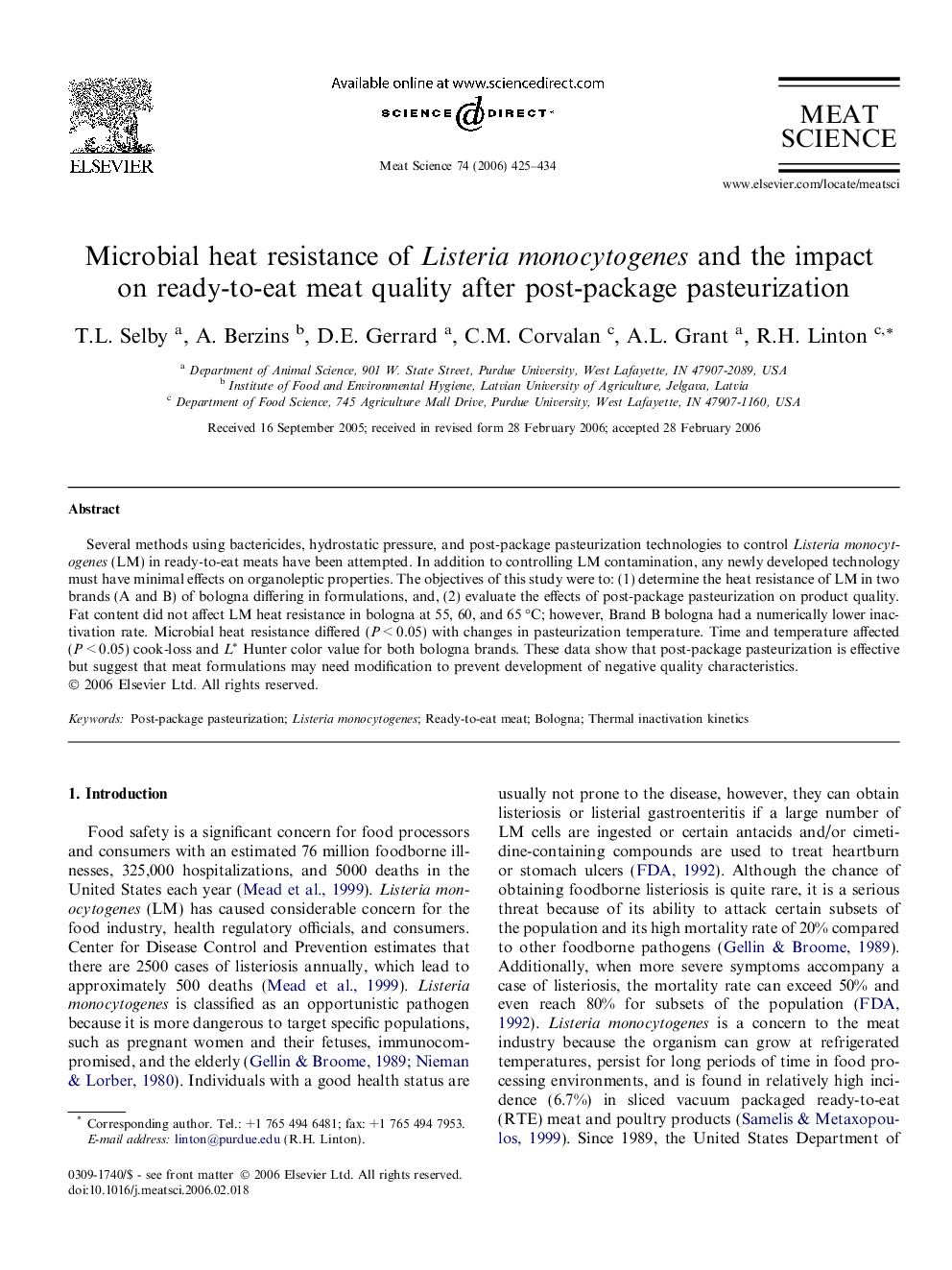| Article ID | Journal | Published Year | Pages | File Type |
|---|---|---|---|---|
| 2451956 | Meat Science | 2006 | 10 Pages |
Several methods using bactericides, hydrostatic pressure, and post-package pasteurization technologies to control Listeria monocytogenes (LM) in ready-to-eat meats have been attempted. In addition to controlling LM contamination, any newly developed technology must have minimal effects on organoleptic properties. The objectives of this study were to: (1) determine the heat resistance of LM in two brands (A and B) of bologna differing in formulations, and, (2) evaluate the effects of post-package pasteurization on product quality. Fat content did not affect LM heat resistance in bologna at 55, 60, and 65 °C; however, Brand B bologna had a numerically lower inactivation rate. Microbial heat resistance differed (P < 0.05) with changes in pasteurization temperature. Time and temperature affected (P < 0.05) cook-loss and L∗ Hunter color value for both bologna brands. These data show that post-package pasteurization is effective but suggest that meat formulations may need modification to prevent development of negative quality characteristics.
